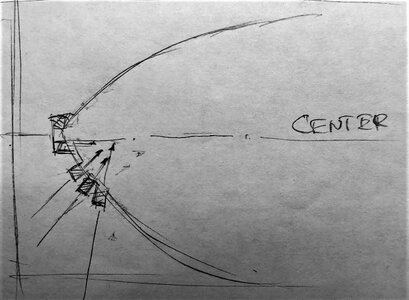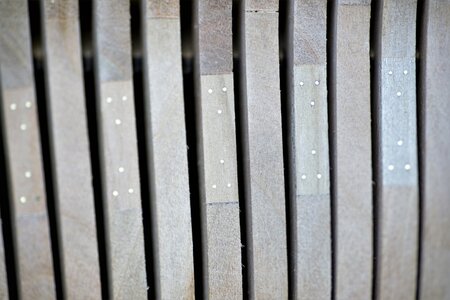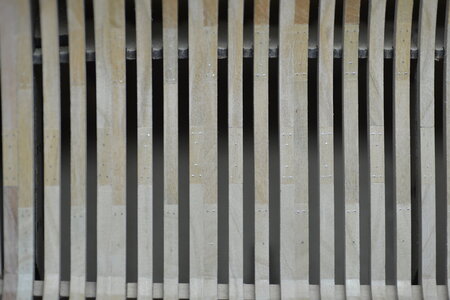It is time for the progress update, and I'd like to thanks everyone for your valuable comments and likes, those are the indication that we moving in the right direction.

Today we are finishing with 'cant' frames. All of the 'how to' and 'gotchas' we have discussed in previous posts. To finish I will provide mostly the photos. However, installing the cant frames require some virtual imagination and measure 3 times before the final shape. You should definitely follow the instruction manual. First 4 frames (1, 4, 2, and 3). This is the correct order. Failing this order will create additional headaches.
I didn't modify the rising wood slots (as
@Maarten did in his build) and this resulted in some trouble positioning. Each frame must be 'adapted' to its slot in the rising wood e.g. it must sit perfectly flat (no horisontal\verical gaps in the rising wood slot and keelson).
The really great help is the notches in the berth, they are the direction guides. Starting from the top-notch of the berth, slide towards the middle notch and then corresponding rising wood notch until the frame touches the keel. Check each side of the frame for gaps, if you see them - sand out excess and try fitting again. Repeat 'adopting' the frame until no visible gaps are seen, or your personal acceptance level. This is a relatively slow process and requires as much patience and attention for a successful job.
Frames #1 and #4 are most important for correct placement, their proper positioning will help with frames #2 and #3, but frame #3 is most challenging, IMHO. Use of templates a MUST!
First frames are installed
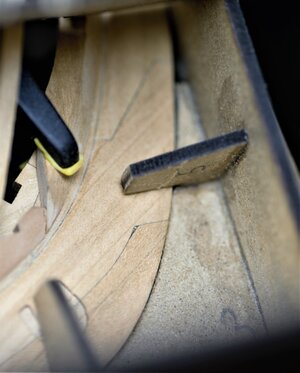
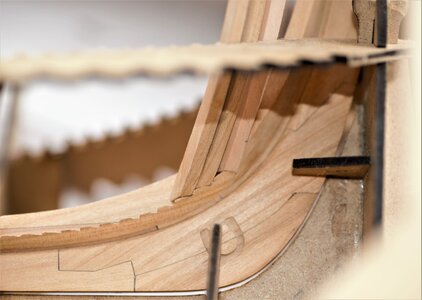
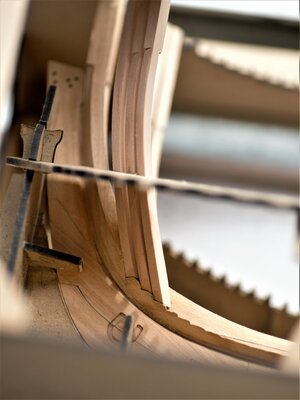
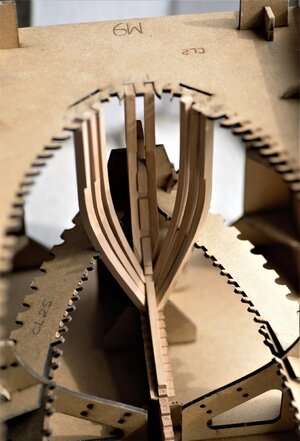
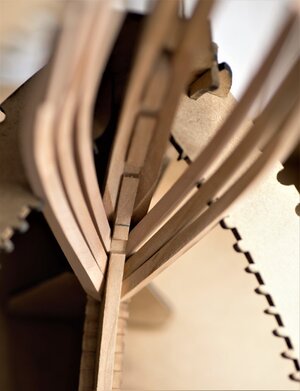
Complete set of cant frames in-place.
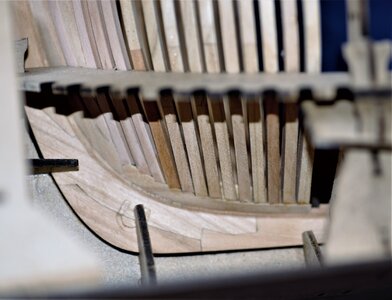
macro view
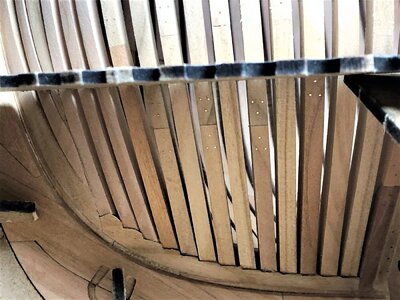
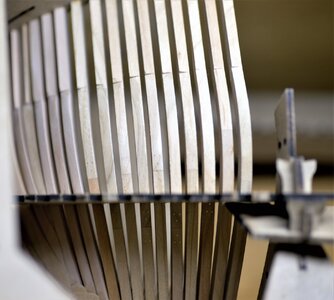
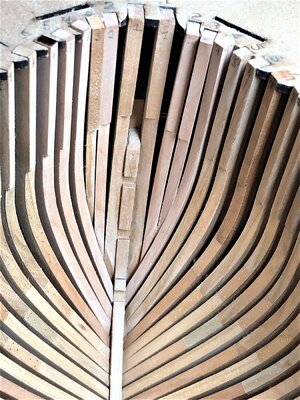
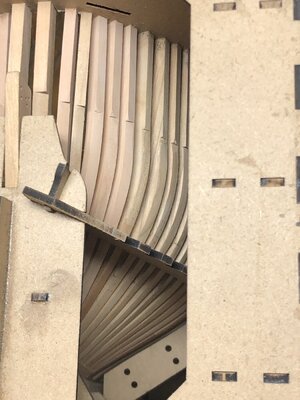
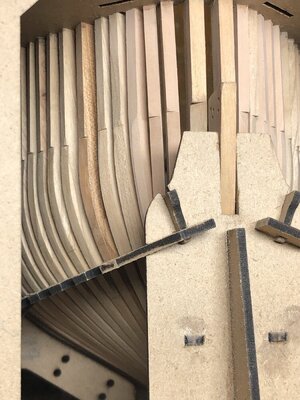
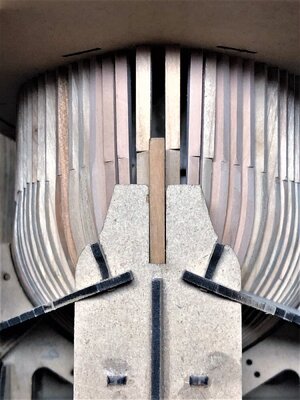
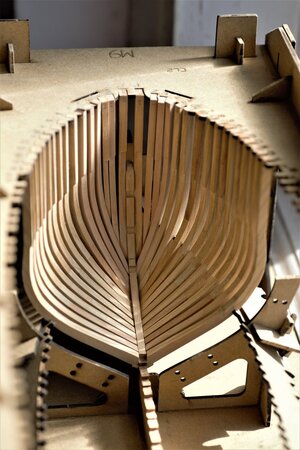
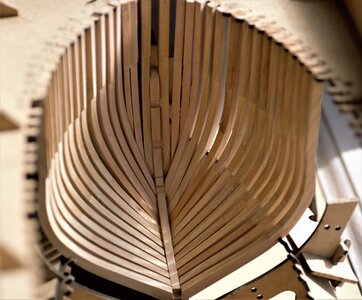
Stern 'cant' frames assembled\instaled the same way, but...we will install them after completing assembly the Stern.
See you soon and the agenda will be Stern section.

Will be working on Transom.























